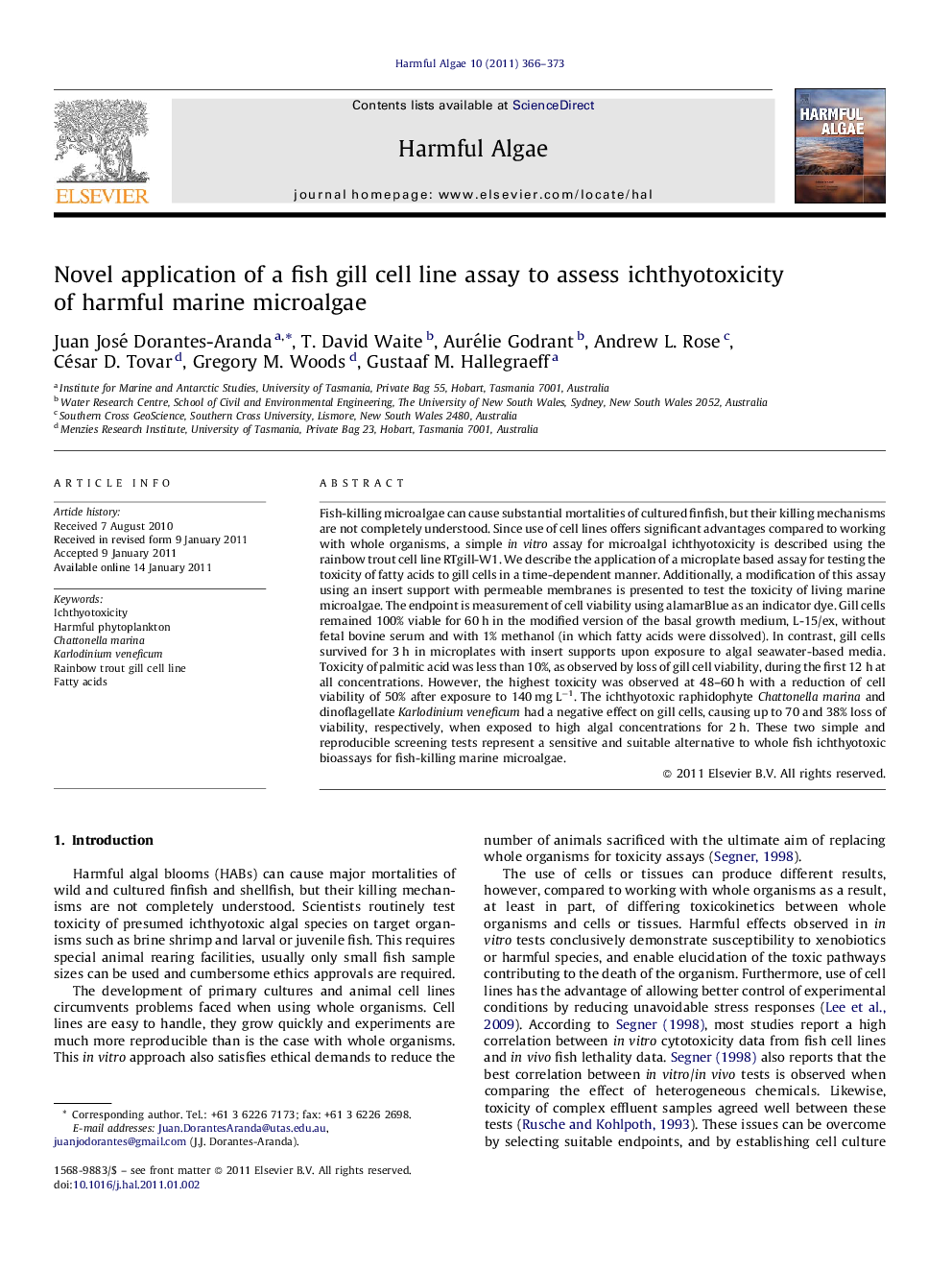| کد مقاله | کد نشریه | سال انتشار | مقاله انگلیسی | نسخه تمام متن |
|---|---|---|---|---|
| 4545707 | 1327466 | 2011 | 8 صفحه PDF | دانلود رایگان |

Fish-killing microalgae can cause substantial mortalities of cultured finfish, but their killing mechanisms are not completely understood. Since use of cell lines offers significant advantages compared to working with whole organisms, a simple in vitro assay for microalgal ichthyotoxicity is described using the rainbow trout cell line RTgill-W1. We describe the application of a microplate based assay for testing the toxicity of fatty acids to gill cells in a time-dependent manner. Additionally, a modification of this assay using an insert support with permeable membranes is presented to test the toxicity of living marine microalgae. The endpoint is measurement of cell viability using alamarBlue as an indicator dye. Gill cells remained 100% viable for 60 h in the modified version of the basal growth medium, L-15/ex, without fetal bovine serum and with 1% methanol (in which fatty acids were dissolved). In contrast, gill cells survived for 3 h in microplates with insert supports upon exposure to algal seawater-based media. Toxicity of palmitic acid was less than 10%, as observed by loss of gill cell viability, during the first 12 h at all concentrations. However, the highest toxicity was observed at 48–60 h with a reduction of cell viability of 50% after exposure to 140 mg L−1. The ichthyotoxic raphidophyte Chattonella marina and dinoflagellate Karlodinium veneficum had a negative effect on gill cells, causing up to 70 and 38% loss of viability, respectively, when exposed to high algal concentrations for 2 h. These two simple and reproducible screening tests represent a sensitive and suitable alternative to whole fish ichthyotoxic bioassays for fish-killing marine microalgae.
Research highlights▸ Two simple and reproducible screening tests were developed and represent a sensitive and suitable alternative to whole fish ichthyotoxic bioassays for fish-killing marine microalgae. These in vitro assays provide a new and better approach for the study and assessment of ichthyotoxic phytoplankton since they are based on a fish gill cell line as model. ▸ One version of these assays allows testing algal extracts, such as fatty acids, but it can also be used to test phycotoxins. The other version of these assays considers the assessment of living microalgae, upon direct exposure of the gill cells to phytoplankton grown in seawater-based media. ▸ Exposure of the gill cells to palmitic acid showed a decrease in cell viability, suggesting that some fatty acids produced by harmful microalgae may form part of their fish killing mechanism. ▸ Toxicity of the raphidophyte Chattonella marina and dinoflagellate Karlodinium veneficum towards gill cells was demonstrated, with C. marina being more toxic; especially after rupture of algal cells.
Journal: Harmful Algae - Volume 10, Issue 4, May 2011, Pages 366–373